Abstract
1. The effects of two inhibitors of uptake pump in serotonergic neurons, Lilly 110140 and chlorimipramine, on the thermoregulatory responses of unanaesthetized rats to different ambient temperatures (Ta) of 8, 22 and 30 degrees C were assessed. 2. Intraperitoneal administration of either Lilly 110140 or chlorimipramine produced dose-dependent hypothermia at 8 and 22 degrees C Ta. At 8 degrees C Ta the hypothermia was due to a decrease in metabolic heat production. At 22 degrees C Ta, the hypothermia was brought about by both a decrease in metabolic heat production and an increase in cutaneous temperature of the tail and the footsole. 3. However, at 30 degrees C Ta, there were no changes in rectal temperature in response to either Lilly 110140 or chlorimipramine application. 4. The data suggest that an increase in serotonergic receptor activity or in functional serotonin in brain decreases heat production and/or increases heat loss and leads to hypothermia in rats.
Full text
PDF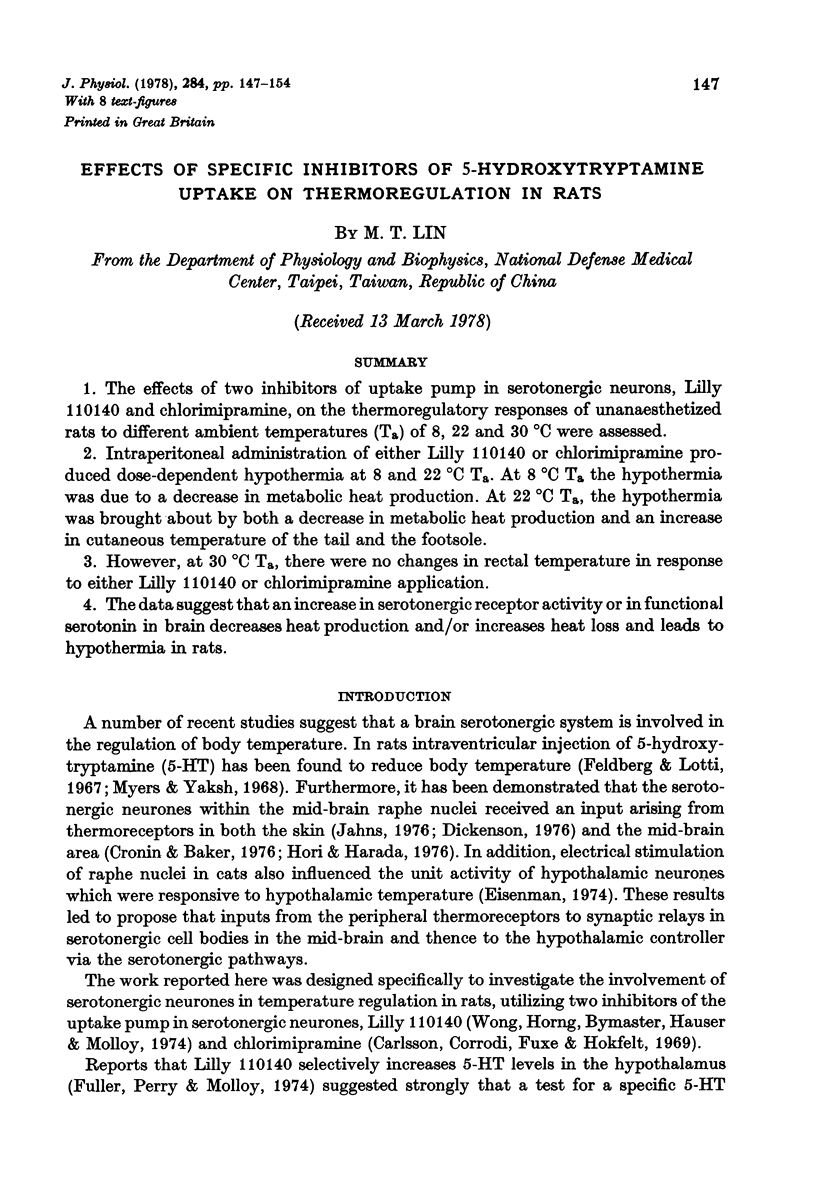
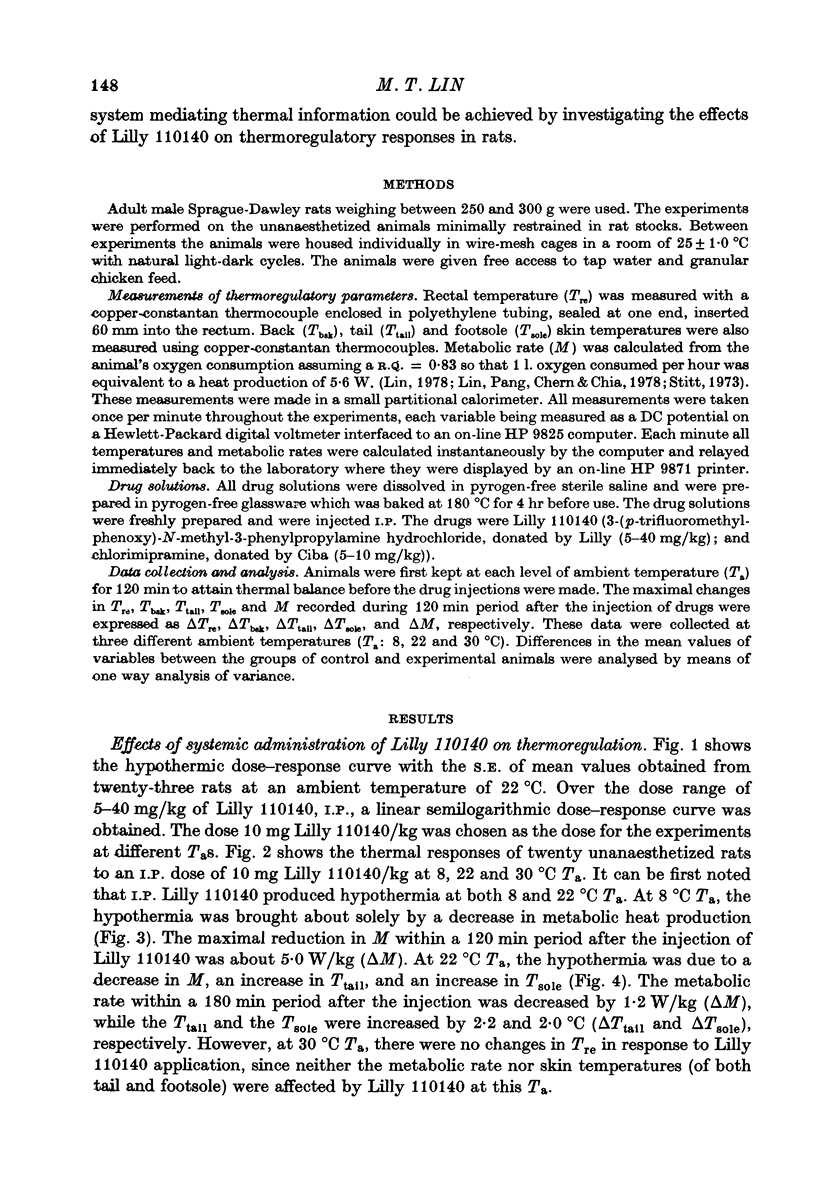



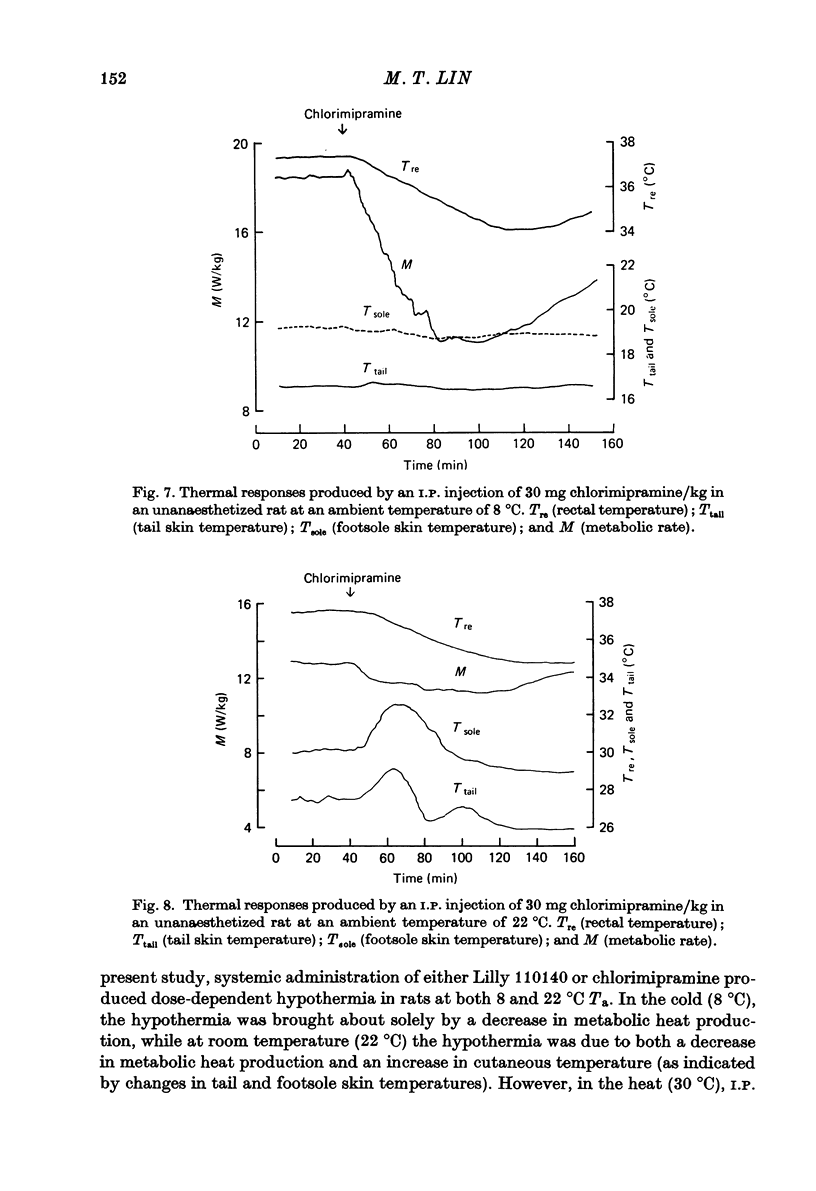
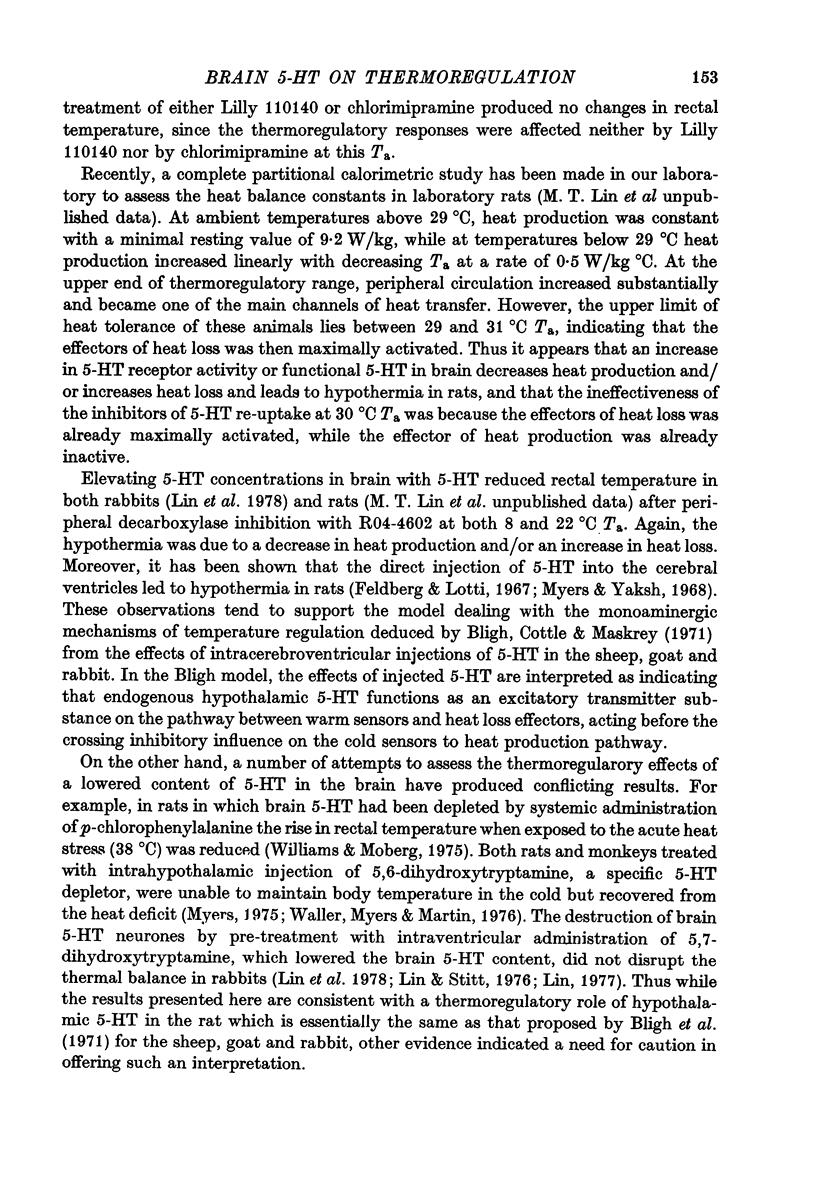
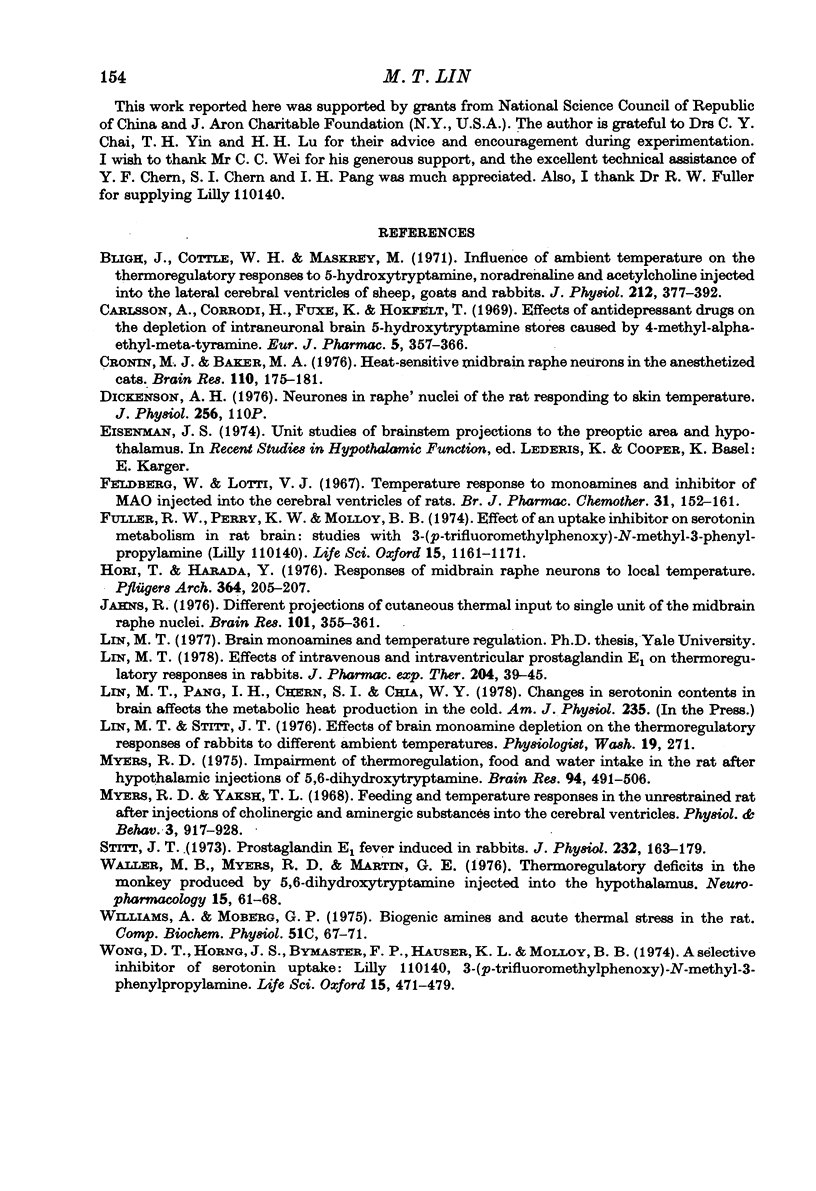
Selected References
These references are in PubMed. This may not be the complete list of references from this article.
- Bligh J., Cottle W. H., Maskrey M. Influence of ambient temperature on the thermoregulatory responses to 5-hydroxytryptamine, noradrenaline and acetylcholine injected into the lateral cerebral ventricles of sheep, goats and rabbits. J Physiol. 1971 Jan;212(2):377–392. doi: 10.1113/jphysiol.1971.sp009330. [DOI] [PMC free article] [PubMed] [Google Scholar]
- Carlsson A., Corrodi H., Fuxe K., Hökfelt T. Effect of antidepressant drugs on the depletion of intraneuronal brain 5-hydroxytryptamine stores caused by 4-methyl-alpha-ethyl-meta-tyramine. Eur J Pharmacol. 1969 Mar;5(4):357–366. doi: 10.1016/0014-2999(69)90113-7. [DOI] [PubMed] [Google Scholar]
- Feldberg W., Lotti V. J. Temperature responses to monoamines and an inhibitor of MAO injected into the cerebral ventricles of rats. Br J Pharmacol Chemother. 1967 Sep;31(1):152–161. doi: 10.1111/j.1476-5381.1967.tb01985.x. [DOI] [PMC free article] [PubMed] [Google Scholar]
- Fuller R. W., Perry K. W., Molloy B. B. Effect of an uptake inhibitor on serotonin metabolism in rat brain: studies with 3-(p-trifluoromethylphenoxy)-N-methyl-3-phenylpropylamine (Lilly 110140). Life Sci. 1974 Sep 15;15(6):1161–1171. doi: 10.1016/s0024-3205(74)80012-3. [DOI] [PubMed] [Google Scholar]
- Hori T., Harada Y. Responses of Midbrain raphe neurons to local temperature. Pflugers Arch. 1976 Jul 30;364(2):205–207. doi: 10.1007/BF00585193. [DOI] [PubMed] [Google Scholar]
- Lin M. T. Effects of intravenous and intraventricular prostaglandin E1 on thermoregulatory responses in rabbits. J Pharmacol Exp Ther. 1978 Jan;204(1):39–45. [PubMed] [Google Scholar]
- Myers R. D. Impairment of thermoregulation, food and water intakes in the rat after hypothalamic injections of 5,6-dihydroxytryptamine. Brain Res. 1975 Sep 5;94(3):491–506. doi: 10.1016/0006-8993(75)90232-2. [DOI] [PubMed] [Google Scholar]
- Stitt J. T. Prosaglandin E1 fever induced in rabbits. J Physiol. 1973 Jul;232(1):163–179. doi: 10.1113/jphysiol.1973.sp010262. [DOI] [PMC free article] [PubMed] [Google Scholar]
- Waller M. B., Myers R. D., Martin G. E. Thermoregulatory deficits in the monkey produced by 5,6-dihydroxytryptamine injected into the hypothalamus. Neuropharmacology. 1976 Jan;15(1):61–68. doi: 10.1016/0028-3908(76)90098-8. [DOI] [PubMed] [Google Scholar]
- Williams B. A., Moberg G. P. Biogenic amines and acute thermal stress in the rat. Comp Biochem Physiol C. 1975 Jun 1;51(1):67–71. doi: 10.1016/0306-4492(75)90040-4. [DOI] [PubMed] [Google Scholar]


